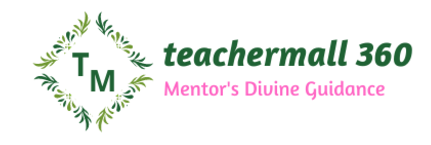Advertising has grow to be an essential tool for companies to achieve their target audience. With the growth of the internet and social media, companies now have access to numerous advertising platforms, every with its unique value structure. Understanding the price construction of various advertising platforms is essential for maximizing return on investment (ROI) and ensuring that marketing budgets are well-spent. This article provides an in-depth look on the price structures of a number of the most popular advertising platforms, together with Google Ads, Facebook Ads, Instagram Ads, and LinkedIn Ads.
1. Google Ads
Google Ads is one of the most widely used advertising platforms globally, providing businesses the ability to display ads throughout Google Search, YouTube, and millions of partner websites. The cost construction of Google Ads is based totally on the Pay-Per-Click (PPC) model, however different pricing models, reminiscent of Price-Per-Thousand Impressions (CPM) and Value-Per-Acquisition (CPA), are also available.
– Pay-Per-Click (PPC): The PPC model signifies that advertisers only pay when someone clicks on their ad. The price of every click is determined through an auction system, where advertisers bid on specific keywords associated to their business. The fee per click (CPC) can range significantly depending on the competitiveness of the keywords being targeted. For instance, highly competitive industries like insurance or finance can see CPCs ranging from $5 to $50 and even higher.
– Cost-Per-Thousand Impressions (CPM): CPM is a model where advertisers pay for every 1,000 impressions (views) of their ad. This model is commonly used in display advertising when brand visibility is a higher priority than direct engagement.
– Value-Per-Acquisition (CPA): Within the CPA model, advertisers only pay when a particular action, comparable to a purchase order or sign-up, is completed. This is often more costly than PPC however can provide a clearer ROI when the desired consequence is highly valuable to the business.
2. Facebook Ads
Facebook Ads, along with its sister platform Instagram, gives one of the most sophisticated advertising platforms, known for its strong targeting options. Companies can create ads tailored to very particular demographics, behaviors, and interests. The price structure of Facebook Ads is versatile, providing various bidding strategies based on the advertiser’s objectives.
– Value-Per-Click (CPC): Much like Google Ads, Facebook Ads permits advertisers to pay based on the number of clicks their ad receives. CPC rates on Facebook are generally lower than Google, typically starting from $0.50 to $2.00 depending on the business and viewers targeting.
– Value-Per-Impression (CPM): Facebook Ads also use CPM pricing, the place advertisers are charged based mostly on the number of times their ad is shown, regardless of whether it is clicked. The common CPM on Facebook can range widely however typically falls between $5 and $15 per thousand impressions.
– Cost-Per-Action (CPA): Facebook affords CPA bidding the place advertisers pay when a particular action, corresponding to a purchase or lead form submission, is completed. The cost of every action depends on factors reminiscent of viewers targeting and the advancedity of the action being measured. As an example, e-commerce businesses may discover their CPA costs starting from $10 to $50 per conversion, depending on the product and targeting.
3. Instagram Ads
Instagram Ads are part of Facebook’s advertising platform, so the cost structure is similar. Nonetheless, Instagram’s visual focus and consumer demographics can impact costs and effectiveness. Instagram tends to have a higher have interactionment rate compared to Facebook, particularly for younger audiences.
– Value-Per-Click (CPC): On Instagram, CPC rates are similar to Facebook Ads, starting from $0.50 to $2.00, however might be slightly higher as a result of platform’s robust concentrate on visuals and younger audience demographic.
– Value-Per-Impression (CPM): CPM rates on Instagram may also be slightly higher than Facebook, with prices ranging between $5 and $10 per thousand impressions.
– Value-Per-Acquisition (CPA): Like Facebook, Instagram additionally helps CPA bidding. The price per acquisition on Instagram is generally in the same range as Facebook, however advertisers targeting youthful audiences or more visually appealing products may find Instagram more efficient for conversions.
4. LinkedIn Ads
LinkedIn Ads is the platform of choice for companies looking to succeed in professionals and B2B audiences. The associated fee construction on LinkedIn is generally higher than on platforms like Facebook and Instagram due to its professional focus and narrower audience.
– Cost-Per-Click (CPC): LinkedIn’s CPC rates are typically higher than other platforms, ranging from $5 to $10 per click, depending on the audience and targeting options used.
– Value-Per-Impression (CPM): CPM rates on LinkedIn are additionally higher than most other platforms, typically ranging from $10 to $20 per thousand impressions. However, for corporations targeting high-worth B2B leads, these costs can be justifiable.
– Price-Per-Lead (CPL): LinkedIn Ads additionally provide a Price-Per-Lead (CPL) model, which is particularly useful for companies focused on lead generation. CPL costs on LinkedIn are normally higher than Facebook or Instagram as a result of professional audience, with prices per lead starting from $30 to $a hundred depending on the industry.
Conclusion
Understanding the cost construction of various advertising platforms is critical to developing an efficient digital marketing strategy. Every platform—Google Ads, Facebook Ads, Instagram Ads, and LinkedIn Ads—gives totally different pricing models that cater to different enterprise goals and budgets. Businesses should caretotally consider the nature of their viewers, business competition, and campaign objectives when selecting an advertising platform and pricing model. By deciding on the precise platform and approach, companies can optimize their marketing spend and achieve a better ROI.
If you have any inquiries about exactly where and how to use advertise site, you can make contact with us at the website.
